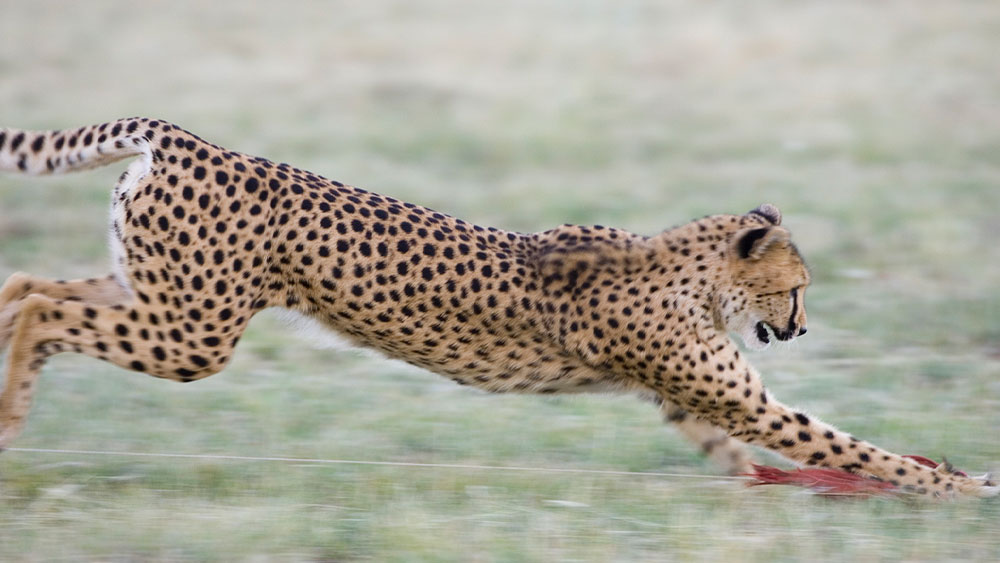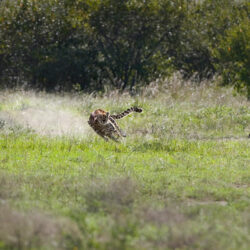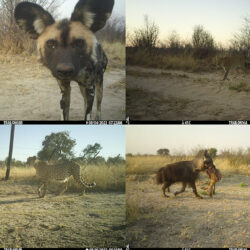Accelerometers on Cheetah Collars – Looking Beyond their Incredible Speed
-

- by Brandy Morenko Campbell April 7, 2022

Article Summary of Categorising cheetah behaviour using tri-axial accelerometer data loggers: a comparison of model resolution and data logger performance.
Collaboration with Queen’s University
Authors: Natasha McGowan, Nikki Marks, Aaron Maule, Anne Schmidt-Küntzel, Laurie Marker, David Scantlebury.
Conservation efforts require strategies that incorporate solid scientific knowledge of a species’ habitat requirements, behavior, movements, population health, and external pressures to drive impactful changes. The use of non-invasive technologies, such as GPS loggers, for this purpose has revolutionized our understanding of how animals move through their environment. Recently, researchers took monitoring cheetah movements to the next level by adding accelerometer devices to their collars. These are small recorders that can measure movement in three directions: up-and-down, front-to-back, and side-to-side. These measurements can provide characteristic traces for behaviors and can therefore allow us to determine when cheetahs are performing important activities such as stalking, walking, feeding, pouncing, and chasing. Ultimately, understanding where cheetahs are in their environment, when they are there and what they are doing there can inform conservationists about the importance of habitats in the life of the cheetah.

In this study, five CCF resident cheetahs were fitted with two different types of accelerometers and monitored via video in an exercise area undertaking various activities. The two types of accelerometers had varying levels of sensitivity and researchers aimed to determine fine-scale behaviors using this type of data and to compare the performance of the two types of accelerometers. Video footage was analyzed alongside the accelerometer data to align and classify each accelerometer activity pattern with a specific behavior.
From the video footage 16 fine-scale behaviors and 11 medium-to-coarse behaviors were identified. The ability to classify each behavior using accelerometers varied depending on the behavior of interest and on the device used; researchers therefore noted that future studies using this technology would likely benefit from the use of several different accelerometers. However, when simply determining whether cheetahs were active or at rest, the two accelerometers performed similarly well. This study was the first of its kind identifying and categorizing fine, medium, and broad-scale behaviors in cheetahs while also comparing different accelerometer loggers. These results will provide researchers with important reference data that can be used in remote-sensing behavior and ecology studies in the future.

Related Reading
-
October 15, 2024
The Ecology of the Landscape Down to the Smallest Part




